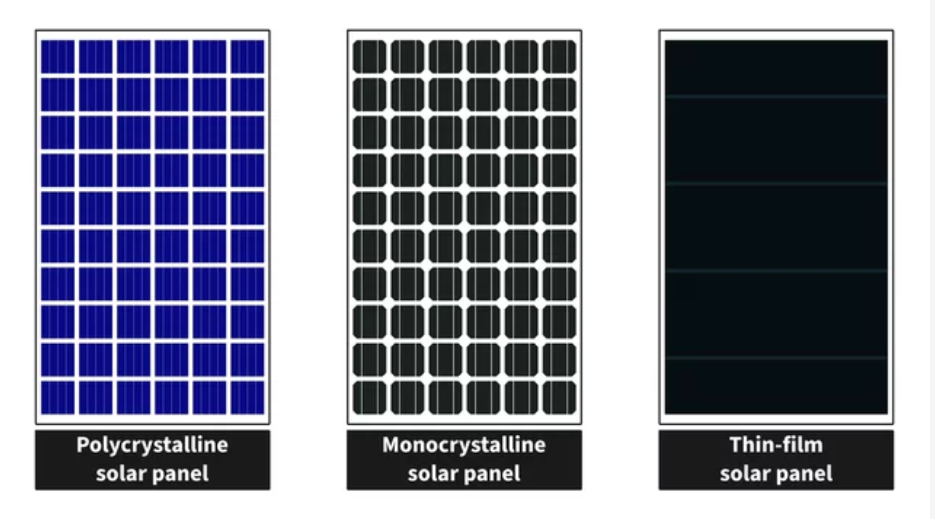How Efficient Are Solar Panels?
Solar panel efficiency refers to the ability of a solar panel to convert sunlight into electricity. The efficiency of a solar panel is typically measured as a percentage, with the most efficient panels currently available having efficiencies of around 22-24%.Solar panel efficiency has improved significantly over the past few decades, with the efficiency of solar panels increasing as new technologies and materials have been developed. In the early days of solar power, solar panels had efficiencies of around 6-12%.
Today, there are a number of different types of solar cells that can be used in solar panels, including monocrystalline, polycrystalline, and thin-film solar cells. Each type of solar cell has its own advantages and disadvantages, and the type of solar cell used in a solar panel can affect its overall efficiency.There are also a number of other factors that can affect the efficiency of a solar panel, including the material and construction of the panel, the angle and orientation of the panel relative to the sun, and the environmental conditions in which the panel is used. For example, solar panels are generally more efficient when they are positioned at an angle that is optimal for capturing sunlight and when they are located in an area with plenty of sunshine.In addition to the efficiency of the solar panels themselves, the overall efficiency of a solar power system also depends on the inverter and other components used in the system. The inverter is responsible for converting the direct current (DC) electricity produced by the solar panels into alternating current (AC) electricity, which is the type of electricity that is used in homes and businesses. Inverters have their own efficiency ratings, and choosing a high-efficiency inverter can help to maximize the overall efficiency of a solar power system.Overall, solar panel efficiency is an important factor to consider when choosing solar panels for a home or business.
Higher efficiency panels can generate more electricity over their lifetime, making them a good investment for some applications. However, it is also important to consider the other components of a solar power system, as well as the environmental conditions and location of the system, in order to maximize the overall efficiency and performance of the system.

Polycrystalline Solar Panels
Polycrystalline solar panels are a type of solar panel that is made from multiple, smaller crystals of silicon. These panels are known for their lower cost and good efficiency, making them a popular choice for both residential and commercial solar power systems.One of the key advantages of polycrystalline solar panels is their cost. Because they are made from multiple, smaller crystals of silicon, polycrystalline solar panels are generally less expensive to produce than monocrystalline solar panels, which are made from a single, continuous crystal of silicon. This makes polycrystalline solar panels an attractive option for homeowners and businesses who are looking for a more cost-effective way to generate solar power.In addition to their lower cost, polycrystalline solar panels are also known for their good efficiency. While they are not as efficient as monocrystalline solar panels, which have an efficiency of around 22-24%, polycrystalline solar panels still have an efficiency of around 16-20%, which is sufficient for many applications. This makes them a good choice for those who are looking to install a solar power system but are on a budget.
Another advantage of polycrystalline solar panels is their durability and long lifespan. Like monocrystalline solar panels, polycrystalline solar panels are less prone to defects and damage than other types of solar cells, which can help to extend their lifespan and improve their overall performance. This makes them a good choice for those who want a solar power system that will last for many years.One potential drawback of polycrystalline solar panels is their appearance. Because they are made from multiple, smaller crystals of silicon, polycrystalline solar panels have a more mottled appearance than monocrystalline solar panels, which have a smooth, uniform appearance. This can be a concern for some homeowners and businesses, especially if the solar panels are visible from the street or from a nearby property.Another potential drawback of polycrystalline solar panels is their performance in low-light conditions. While polycrystalline solar panels are generally more efficient than other types of solar panels, they may not perform as well in low-light conditions such as on overcast days or in shaded areas. This can make them less suitable for certain locations or applications.
Despite these potential drawbacks, polycrystalline solar panels are a popular choice for many homeowners and businesses due to their lower cost and good efficiency. If you are considering installing a solar power system, it is worth considering polycrystalline solar panels as an option. While they may not be as efficient as monocrystalline solar panels, they can still generate a significant amount of electricity and may be a more cost-effective option in the long run.When choosing a solar panel, it is important to consider the specific needs and goals of your home or business. This can help you determine the best type of solar panel for your application and ensure that you get the most value out of your solar power system. Other factors to consider include the location and orientation of your solar panels, the type of inverter and other components you will use, and any applicable incentives or subsidies.Overall, polycrystalline solar panels are a good choice for those looking to invest in a solar power system. While they may not be as efficient as monocrystalline solar panels, they are a more cost-effective option and can still generate a significant amount of electricity. If you are considering installing a solar power system, it is worth considering polycrystalline solar panels as an option.

Monocrystalline Solar Panels
Monocrystalline solar panels are a type of solar panel that is made from a single, continuous crystal of silicon. These panels are known for their high efficiency, which makes them a popular choice for both residential and commercial solar power systems.One of the key advantages of monocrystalline solar panels is their high efficiency. Because they are made from a single, continuous crystal of silicon, the electrons in monocrystalline solar cells are able to move more freely, allowing the cells to convert more sunlight into electricity. As a result, monocrystalline solar panels are able to generate more electricity per square foot than other types of solar panels, making them a good choice for applications where space is limited.In addition to their high efficiency, monocrystalline solar panels are also known for their durability and long lifespan. Because the cells in monocrystalline solar panels are made from a single, continuous crystal of silicon, they are less prone to defects and damage than other types of solar cells. This makes monocrystalline solar panels less likely to degrade over time, which can help to extend their lifespan and improve their overall performance.Another advantage of monocrystalline solar panels is their aesthetic appeal. Because they are made from a single, continuous crystal of silicon, monocrystalline solar panels have a smooth, uniform appearance that is often preferred by homeowners and businesses. This can be particularly important for applications where the solar panels are visible, such as on the roof of a home or business.While monocrystalline solar panels have a number of advantages, there are also a few potential drawbacks to consider. One of the main disadvantages of monocrystalline solar panels is their cost. Because they are made from a single, continuous crystal of silicon, monocrystalline solar panels are generally more expensive than other types of solar panels. This can make them less appealing to some homeowners and businesses, especially those who are on a tight budget.Another potential drawback of monocrystalline solar panels is their performance in low-light conditions. While monocrystalline solar panels are generally more efficient than other types of solar panels, they may not perform as well in low-light conditions such as on overcast days or in shaded areas. This can make them less suitable for certain locations or applications.
Despite these potential drawbacks, monocrystalline solar panels are a popular choice for many homeowners and businesses due to their high efficiency and long lifespan. If you are considering installing a solar power system, it is worth considering monocrystalline solar panels as an option. While they may be more expensive upfront, they can generate more electricity over their lifetime and may be a more cost-effective option in the long run.When choosing a solar panel, it is important to consider the specific needs and goals of your home or business. This can help you determine the best type of solar panel for your application and ensure that you get the most value out of your solar power system. Other factors to consider include the location and orientation of your solar panels, the type of inverter and other components you will use, and any applicable incentives or subsidies.

Overall, monocrystalline solar panels are a high-quality, efficient choice for those looking to invest in a solar power system. While they may be more expensive than other types of solar panels, they can generate more electricity over their lifetime and may be a more cost-effective option in the long run. If you are considering installing a solar power system, it is worth considering monocrystalline solar panels as an option.